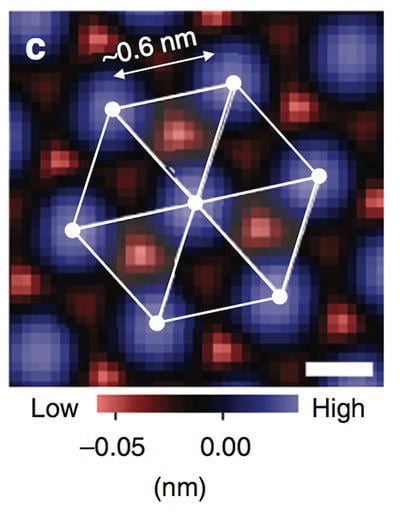PRESS RELEASE
- Research
- 2017
Toward the next generation of superconductors and lithium-ion batteries - Scanning the surface of lithium titanate -:Professor Satoshi Watanabe, Department of Material Engineering, and other researche
Authors
Yoshinori Okada, Yasunobu Ando, Ryota Shimizu, Emi Minamitani, Susumu Shiraki, Satoshi Watanabe & Taro Hitosugi
Abstract
Researchers at Tokyo Institute of Technology, Tohoku University and the University of Tokyo have applied advanced scanning methods to visualize the previously unexplored surface of a superconductor: lithium titanate (LiTi2O4).
LiTi2O4 is the only known example of a so-called spinel oxide superconductor. Its rarity makes LiTi2O4 of enormous interest to those studying the origins of superconductivity, as it has the highest superconducting transition temperature (of up to 13. 7 K) within this group of materials.
Although LiTi2O4 in bulk form has been studied for decades, little is known about its surfaces, owing to the difficulty of preparing suitable LiTi2O4 surfaces for further analysis.
Now, using a combination of experimental and theoretical methods, a team of researchers including Taro Hitosugi of Tokyo Tech and the Advanced Institute for Materials Research at Tohoku University, has obtained visual evidence of superconductivity on ultrathin LiTi2O4 films, marking a milestone in surface science.
Published in Nature Communications, the study began with the detection of an unexpected energy “gap,” hinting at the existence of superconductivity at the surface. Furthermore, their investigations revealed that the surface superconductivity is in different states from that of the bulk interior. The researchers used two experimental methods to visualise this finding: pulsed laser deposition (PLD), a technique that has enabled the production of high-quality LiTi2O4 films under vacuum conditions; and low-temperature scanning tunnelling microscopy/spectroscopy (STM/STS), for precise imaging of the surfaces.
“Imaging the atoms for the first time was surprising, as it's usually very difficult to observe the spinel-oxide atoms,” says Hitosugi. “We then wanted to know the exact atomic arrangement on the surface, and in order to do that, we compared theory and experiment.”

Nature Communications : https://www.nature.com/articles/ncomms15975?WT.feed_name=subjects_physical-sciences
Tohoku University : https://www.tohoku.ac.jp/en/press/scanning_lithium_titanate_surface.html
Tohoku University AIMR (Advanced Institute for Materials Research) : http://www.wpi-aimr.tohoku.ac.jp/en/news/press/2017/20170704_000981.html
Tokyo Institute of Technology: http://www.titech.ac.jp/english/news/2017/038745.html
EurekAlart!: https://eurekalert.org/pub_releases/2017-07/tu-sts070417.php

